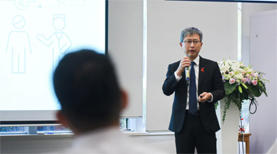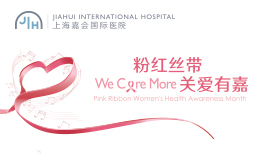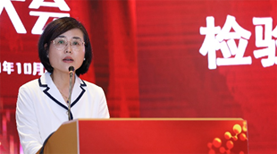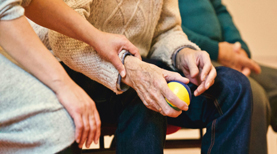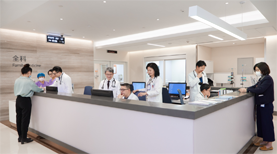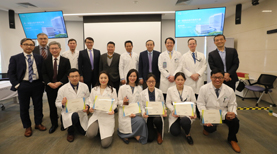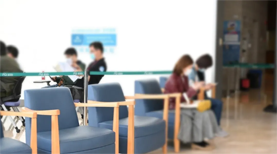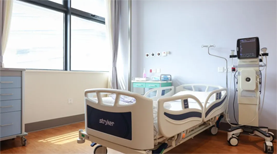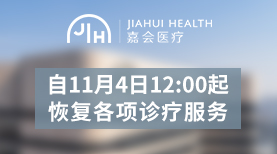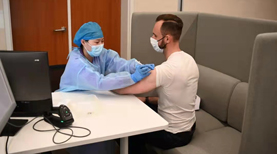Pop Quiz: What do airlines, nuclear power stations, the military and hospitals have in common?
The answer is that all of these organizations share high levels of complexity and risk. Here at Jiahui International Hospital (JIH), we recognize the immense responsibility we hold as a healthcare provider, and we work hard to ensure that our patients can trust us to provide the best and safest possible care.
“In Jiahui, patient safety is more than just a slogan. Jiahui leadership takes patient safety seriously and wants all Jiahui staff to understand its importance. As long as we deliver health care and sick care to our patients, patient safety will remain an everyday matter at Jiahui,” says Dr. John Hsiang, Chief Medical Officer of Jiahui Health and Clinical President of Jiahui International Hospital.
Creating a High Reliability Organization (HRO)
A high reliability organization (HRO), is an organization that has succeeded in avoiding catastrophes in an environment where accidents are normally expected due to risk factors and complexity.
According to Dr. Young AHN, Deputy Chief Medical Officer and Chief of Anesthesiology and Intensive Care Medicine at Jiahui Health, HROs are recognizable across high risk industries around the world.
“The culture of another HRO will feel familiar, regardless of industry or geography”, says Dr. Ahn.
He uses the example of the aviation industry and airplanes. “You might not understand the exact terminology that’s being used between crew members, but someone familiar with HROs would be able to quickly recognize the culture, communication, and processes taken to ensure safety.”
The Importance of Safety Culture
Creating a healthcare system that lives up to patients’ trust means more than just a few safety tips and training videos; it requires the development of a deeply embedded safety culture. Safety culture is the enduring, shared, learned beliefs and behaviors that reflect an organization’s willingness to learn from successes and opportunities to improve.
At Jiahui, we believe that safety culture is actually made up of four components that are building blocks to achieving HRO designation.
Reporting culture: All team members recognize the value of reporting safety events through our Jiahui reporting system, allowing the entire organization to learn and improve.
Just culture: Where expectations are set and demonstrated at every level of Jiahui. Both systems processes and individual accountability are emphasized.
Flexible culture: People who work in high functioning teams provide better care! Jiahui department members support each other and communicate effectively in both times of calm and urgency.
Learning culture: Jiahui systematically analyzes safety events and clearly addresses how to eliminate human risk factors while drawing out positive behaviors from each of these components.
The development of a safety culture is an ongoing journey requiring continuous feedback and improvement.
How do you build a culture of safety?
Building a safety culture takes time, but luckily, patient safety has been embedded in Jiahui’s very roots, with staff beginning to undergo safety training and drills from before the doors to JIH even opened! We combine standards locally, internationally, and across industries.
Drawing from World Health Organization (WHO), Agency for Healthcare Research and Quality (AHRQ), and the Joint Commission International (JCI) “gives us the advantage of combining best local and international practices in Shanghai”, says Dr. Ahn.
HROs require deliberate and ongoing practice at every level of the organization. That effort is coordinated by the Safety Office and Patient Safety Council, which reports regularly to the executive committees. Each of the safety culture elements mentioned above are concrete areas that can be excelled in, so Jiahui focuses on these elements in all areas of our Jiahui system in parallel.
Crisis communication and training is one component of an HRO. To that end, Jiahui targets different areas based on individualized risk and need. Our crisis communication training and drills for pediatrics are tailored differently than in radiology or the Intensive Care Unit. There is a combination of didactic, role playing and simulation. Hundreds of our nurses, physicians and staff have completed this ongoing cycle, many multiple times.
Of course, these are only a few of the ways that Jiahui relentlessly pursues our efforts to keep patients safe. In future, we will continue to develop and perfect our training program to ensure that we provide the safest possible environment for every Jiahui patient.




